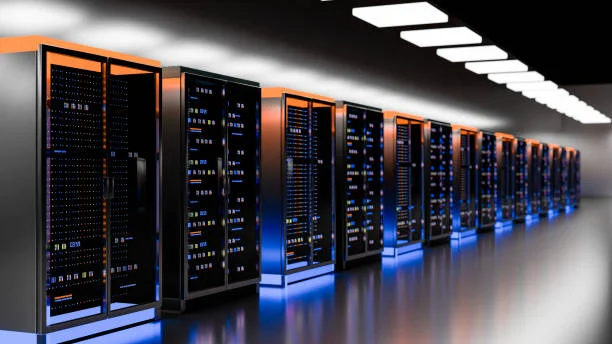We live in an information-centric world where we have a growing dependence on consuming and creating more and more data. This data, which we are dependent on, shall be available to us whenever and wherever we need it.
Before moving forward, let us see the history of data storage and how it evolved:
History of Data Storage over the years
Magnetic Drum – Gustav Tauschek invented it in 1932. It had a storage capacity of 48 KB.
Magnetic Tape Drive – It was invented in 1928 but was first used to store data in 1951. It had a storage capacity of 231 KB.
Magnetic Core – It was invented in 1951 and had a storage capacity of 2 KB
Hard Disk Drive (HDD) – It was first introduced by IBM in 1956 and was of a size of a Refrigerator. Its storage capacity was 3,750 KB.
Floppy Disk – It was also developed by IBM in 1967, which had a storage capacity of 80 KB.
Compact Disc (CD) – Both Philips and Sony developed it in 1982, which had a storage capacity of 700,000 KB or 700 MB.
Zip Drive – Iomega introduced it in 1994. Its storage capacity used to be 100,000 KB or 100 MB.
Digital Video Disc (DVD) – Both Philips and Sony also developed it in 1995, which had a storage capacity of 1,460,000 KB or 1.46 GB.
SD Card – The first SD card held 64 MB space and was invented in 1999 by a joint venture of SanDisk, Panasonic, and Toshiba.
USB Flash Drive – An Israeli Company named M-Systems, developed the USB Flash Drive in 1999. Its storage capacity was 8 MB.
Blu-ray Optical Disc – It was developed by the tech-industry consortium in 2003 which had a storage capacity of 25 GB.
Cloud Data Storage – It was first developed in 2006 by AWS. The storage depends entirely on how much you pay for it.
Some of the Data storage trends for 2024
Flash Storage
Flash Storage sales were on the rise in 2024 as compared to previous years. It is estimated that its price will further go down, boosting its sales in 2019 as the technology is on the rise.
Analytics
In 2024, Analytics helped many organizations improve their performance and data management. Many vendors started embedding analytics into their data storage systems so that they can quickly get the information they want in fewer clicks.
Software-defined storage (SDS)
This helps enterprises in supporting their legacy assets, which allowed any enterprise to take advantage of some types of storage models like subscription-based or consumption-based.
Multi-Cloud Storage
In 2024, enterprises started shifting towards adopting multi-cloud storage to store their work across multiple cloud models. With this, the enterprise can reduce the loss of data or the issue of the server being down.
These are the most popular data storage trends for 2024 and will play an essential role in 2019 as well.
7 Major Data Storage Trends for 2024
Storage Management
Storage management will play a key role in 2019. Many enterprises will adopt various storage management techniques to work across various things.
This will help an enterprise in selecting the best storage model, which will also save costs and will be reliable in terms of service and server.
Large Memory Servers
Many organizations are in demand for large memory servers. Intel and many tech giants are set to introduce Non Volatile Random Access Memories aka NVRAM.
These memories can retain the data without using power from the batteries, i.e., they use power cycles. NVRAM will be much faster than SSDs or any other disk.
Scale-out storage
Scale-out storage is a network-attached storage (NAS) architecture that is used to store exabytes of data.
With this, many private data centers are also able to create an infrastructure that is tremendously cost-competitive, more controllable, and offers low latency.
Storage Automation
Yes, you read it right. The term storage automation is being discussed in 2024. However, what does it mean?
It is all about how modern-day cloud data centers reduce errors by improving their efficiency and also encapsulating time-consuming or repetitive tasks.
Faster Flash Drives
The prices for flash drives have fallen drastically, which has caused SSD prices to also fall. The lower the cost of the flash drive, the lower the price of the SSD.
With this, many organizations will replace their SSD storage with Flash drives as they are faster and more reliable, which will improve the organization’s performance and space efficiency and also save energy.
Non-volatile memory express (NVMe)
With low latency rates and performance-boosting specifications, it is already a trending technology.
It enables an organization to preserve high bandwidth and also allows an organization to handle massive numbers of commands and queues. They are mainly used for big data analytics.
Multi-cloud storage
For every organization moving data in and out is a very complicated process and moving it to any other system.
Multi-cloud storage environment enables an organization to run applications and data across various public cloud environments like Amazon’s AWS and Microsoft’s Azure or between any public and private cloud.
Conclusion
Data is increasing day by day, and we need many storage options to store our data, but these options should be cheaper and secure too.
Data storage will boost in the near future as many companies are nowadays bringing out new storage technologies that are faster than the previous ones and have a low latency rate as well. Stay tuned for further updates!
Recommended For You:
What is Microsoft Azure Cloud Computing Platform, and What are its Services?
Cloud Computing with AWS – An Introduction to Amazon Web Services

